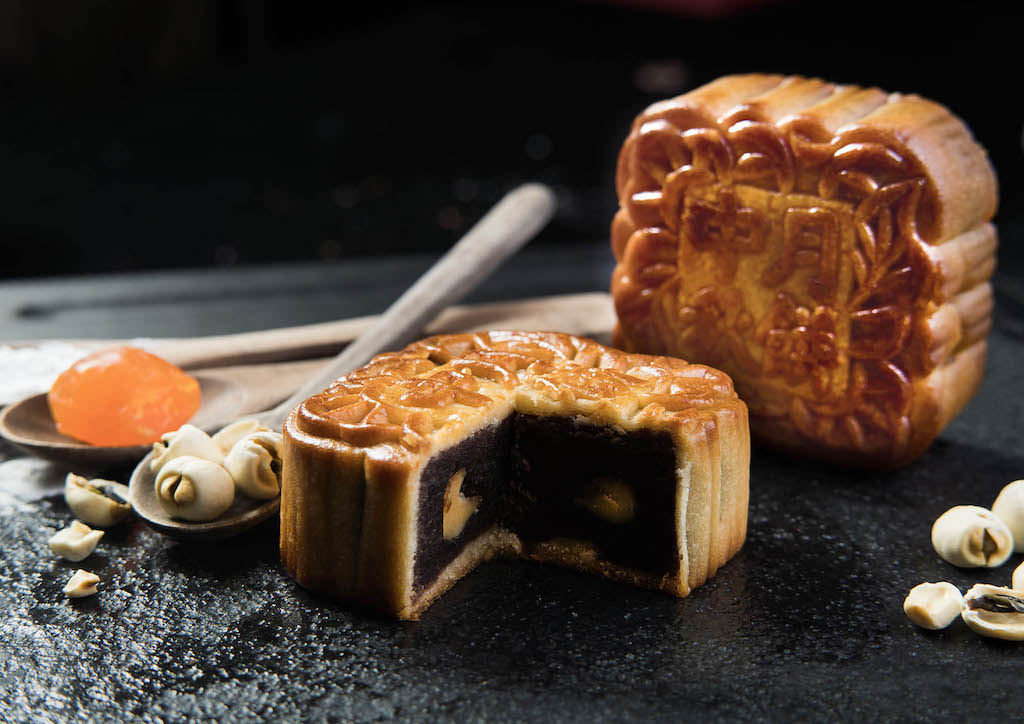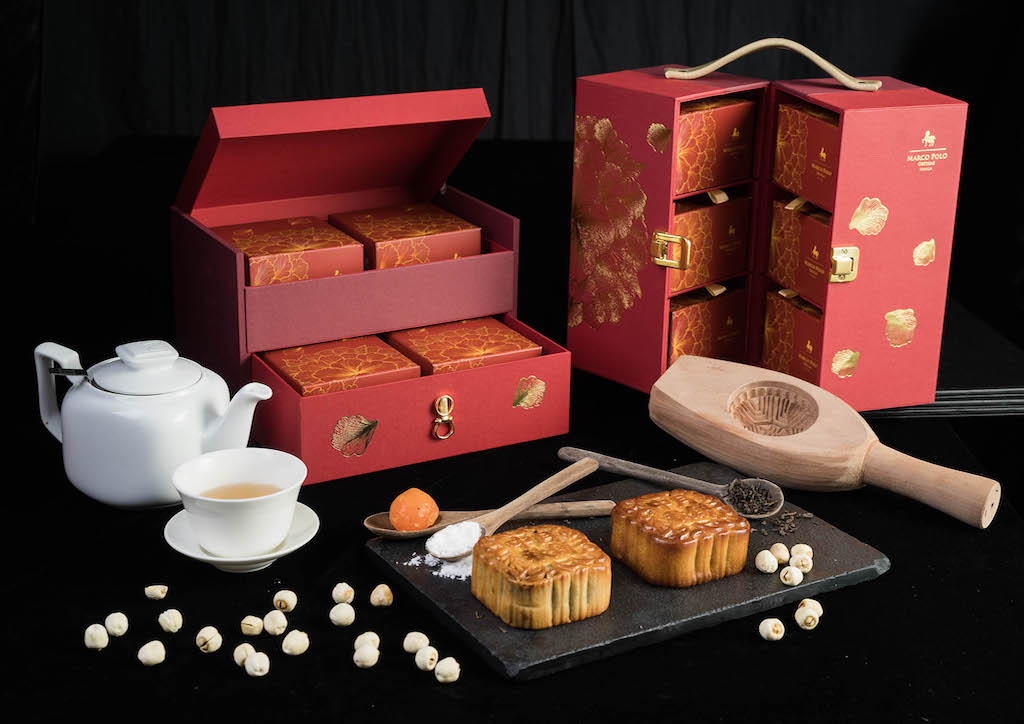The Marco Polo Ortigas Manila invites guests to try their mooncakes, which are inspired by traditional flowers from the Orient. As excited as you may be for this year’s Mid-Autumn Festival, we thought we’d give you a crash course on the origins of the famous “sweet Chinese pie”.
Since the Shang dynasty (c. 1600-1046 BCE), the Chinese have celebrated the Mid-Autumn Festival, or what is popularly known to the general public as the Moon Festival or Harvest Moon Festival. Although many myths have been said about the origins of the festival, the most popular one is the story involving lunar deity Chang’e. Also known as the Moon Goddess of Immortality, she would bless the people with good harvest whenever the moon was in its fullest state.
RELATED READS: Have You Ever Had Hakaw Topped with Gold? You Can at Marco Polo’s Lung Hin!

Chang’e is quite an important symbol in ancient Chinese mythology. According to The Handbook of Chinese Mythology (written by Lihui Yang), she was the wife of a hero named Yi, who was gifted an elixir of immortality by a god who admired him. Depressed that he couldn’t make his wife immortal too, Yi did not drink the potion and instead kept it in his house. One day, an evil nemesis named Peng Meng broke into their home in hunt for the elixir and its powers. As Yi was out hunting, Chang’e had to defend herself. Eager not to give him the elixir, she drank it herself and immediately flew into the sky, becoming the moon. This happened on the 15th of August on the lunar calendar. Each year, on this date, Yi would pay homage to his Chang’e, by putting out food such as cake and fruits. The story quickly spread around China, and locals began to send offerings to Chang’e, who they believed would bless them with good crops and fortune. This tradition still lives on till now.
Today, large celebrations throughout China (it has also spread to Vietnam and other Asian countries) are held each year in honor of Chang’e’s sacrifice. The Mid-Autumn festival is the biggest and most anticipated traditional event for the Chinese, right after Chinese New Year. The festival focuses on celebrating three fundamental concepts. The first is family. Families should have a reunion in honor of the moon being the brightest and roundest for the year. The second is to give thanks for good harvest and business. Lastly, it is a time to observe prayer. It is a big festival celebrating harmony and prosperity.
RELATED READS: Dim Sum Dreams: The New Lunch Menu at Marco Polo’s Lung Hin is Tailored for Dim Sum Addicts

One of the most notable traditions coming from the festival is the creation of mooncakes, the round-shape “Chinese pie” that symbolizes unity. Traditionally served in the morning (when the moon is in hiding), mooncakes have grown to have worldwide fame. The entire family awaits to eat their fair share of the sweet confection during this time of the year. To carry on this history in the Philippines, the Marco Polo Ortigas Manila invites patrons to try theirs, which has been imported directly from Hong Kong. Inspired by traditional flowers from the Orient, this year’s featured mooncakes symbolize luck, prosperity, and honor. Flavors include the Peony (available in half-dozen set gift boxes) and Plum Blossom (set of four pieces), available at PHP 3,588 and PHP 2,588, respectively.
The Marco Polo Ortigas Manila is located at 1600 Meralco Ave., San Antonio, Pasig City. For more information phone (02) 720 7777 or book online via www.marchpolohotels.com or email: [email protected]





